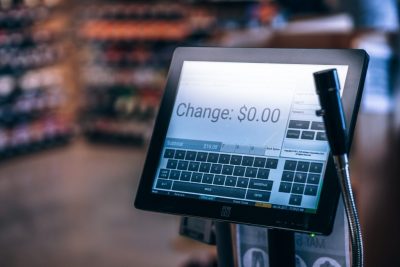In retail, shrinkage is a four-letter word. The collective financial impact of loss due to shrinkage tops $50 billion a year. That’s why preventing this profitability plague is top-of-mind for store owners and facility managers across the country.
Most people don't realize there are four different types of shrink in retail. In this article, we’ll review each of the causes and cover multiple effective ways to reduce and prevent it shrinkage permanently.
The Main Causes Of Shrinkage In Retail
10 Proven Ways To Stop Shrinkage In Retail Stores
- Continuously Track Stock
- Implement Checks And Balances
- Install Obvious Surveillance And Anti-Theft Signage
- Use Anti-Shoplifting Devices: Security Tags
- Implement Thoughtful Store Layouts
- Monitor Your Cash Management Practices
- Have An Intelligent Return And Exchange Policy
- Audit Your Hiring Practices and Training
- Build A Culture Of Integrity And Teamwork, Starting From The Top
- Practice Strategic Staffing
- Bring In The Retail Shrinkage Pros
The Main Causes
Of Shrinkage In Retail
There are four main causes of shrinkage: shoplifting, employee theft, administrative errors, and fraud. Understanding how shrinkage happens in retail stores is the first step in reducing and preventing it.
1. Shoplifting
It’s no surprise to the retail industry that the number one cause of lost profitability is shoplifting. This accounting for over 35% of annual losses, according to the National Retail Federation's annual survey.
Customer theft occurs in various ways. Concealment of goods, altering or swapping price tags, and transferring merchandise from one container to another are common Shoplifter methods.
2. Employee Theft
Close behind shoplifting, 33% of retail shrinkage is attributed to intentional internal theft. At a cost of more than $20 billion a year, it’s a tangible threat to retail profitability.
Dishonest staff pilfer merchandise and cash in a variety of creative ways. Fake returns, issuing fraudulent gift cards, neglecting to scan all items in an accomplice’s purchase, improperly using employee discounts, pocketing cash, and smuggling goods are all common ways that employees steal.
3. Administrative Errors
Not all causes of shrinkage are malicious. But even the most benign sources of loss can be a major hit to your bottom line. Administrative mistakes can account for over 20% of shrinkage, totaling over $2.5 billion annually, industry-wide.
Also known as paper shrink, inaccuracies such as ticketing errors, point of sale (POS) transaction errors, and accounting inaccuracies lead to products being sold for less (or refunded for more) than they should be.
4. Fraud
Two major types of fraud that contribute to retail shrinkage are return fraud and vendor fraud. By nature, fraud is an intentional and malicious deception for personal gain. This source of loss often compounds other causes, amplifying the total revenue loss.
Return fraud is when stolen or used products, or those purchased with counterfeit money are returned for a refund. It also includes the use of counterfeit receipts to return merchandise.
Vendor fraud is a small portion of the problem, amounting to less than 5% of total shrinkage.
Examples include vendors shorting an invoice, or vendor staff stealing products while in your store.
5. Operational Loss
Unforeseen events can happen that may have an impact on shrinkage. For example, a product may be accidentally knocked over by customer that causes the product to break and no longer being sellable. This can also be the case with goods that expire, such as food products. This loss is seen as unavoidable and comes with the cost of doing business.
10 Proven Ways to
Stop Shrinkage in Retail Stores
Knowing the sources of shrink is the first step in prevention. Effectively reducing loss involves implementing systems that help you identify your unique points of vulnerability, through closely monitoring the daily operations of your business.
If you’re losing more than the national average of 1.33% of your sales revenue to shrink, you have a big problem. Implement these 10 expert methods to identify and prevent retail shrinkage immediately.

Continuously Track Stock
Measuring merchandise loss starts with having reliable and current inventory numbers. Comparing stock counts to sales numbers illuminates what’s being stolen. With this insight, you can focus your efforts on understanding the cause--shoplifting, employee theft, errors, or fraud--and work toward loss prevention.
By conducting smaller counts regularly, rather than year-end stocktakes, you can fully document your inventory, while still carrying out regular business activities. This less-predictable method of tracking stock will deter employee theft. It’s also much easier to identify patterns of loss when you catch it soon after it happens.
Implement Checks and Balances
Systematizing your inventory management practices will help identify stock discrepancies and telling shrinkage patterns. Verifying stock count numbers reduces errors. Requiring an inspection of spoiled or damaged goods before they’re thrown out hampers fraud.
The best way to hinder fraud and employee theft is to separate inventory and accounting duties between more than one employee. Don’t allow the same person to handle inventory management, receipt processing, and recording.
Install Obvious Surveillance and Anti-Theft Signage
When people know they’re being watched, they’re less likely to act distastefully. To deter shoplifting and employee theft, mount cameras in obvious locations around the premise. Posted notices, which acknowledge the surveillance and your promise to prosecute thieves, are proven to reduce crime.
Make sure you review the security footage at least weekly, even if there’s no proof of shrinkage. If you do catch a thief, it’s important to follow through on your promise to prosecute and set an example for other would-be criminals.
Use Anti-Shoplifting Devices: Security Tags
RFID and RF security tags will trigger an alarm when moved through a sensor that’s placed at the exits of a store. When merchandise with these tags is removed from the store, employees or on-site security is alerted of the activity and are more able to stop theft. RFID tags have an advantage over RF tags in that they can document the specific item that’s triggering the alarm.
Ink-loaded tags are also useful in deterring shoplifting. While these security tags don’t alert staff in the same way RFID tags do, they effectively spoil the fruits of a thief's labor. If these tags are tampered with or removed, they ruin the material which they’re attached to. The logic of these low-tech tags are that criminals are much less likely to target items which will be useless to them when stolen.
Implement Thoughtful Store Layouts
Clean, organized spaces make it easier for staff to notice when something’s amiss. Keeping merchandise neat and in designated places is not only appealing for patrons, but can help tip off employees when product is stolen.
Arranging and furnishing stores so that there are no broken sight-lines or blind spots helps staff be more effective with loss prevention efforts. Limiting the number of expensive or desirable merchandise on the sales floor can also assist loss-prevention efforts.
Situating cash registers near the entrance/exit and keeping high-risk, expensive items in hard-to-access areas nearby are all best practices for reducing shoplifting.
Monitor Your Cash Management Practices
Whether lost to employee theft or error, missing cash is a consistent pain for retailers. A simple way to mitigate skimming cash is to reconcile each register at the end of each shift, not just the end of the day. You can also leverage technology to combat this long-standing issue by embracing the assistance of a point-of-sale (POS) system.
With a POS, you can assign employee permissions based on what you want each person to be able to do or not do. For example, you can name the specific staff who are authorized to complete returns and void purchases, two prime shrinkage outlets.
You can also track who’s doing what when. Suspicious patterns like unnecessary access to the cash drawer, excessive refunds in small amounts, and product returns that don’t match merchandise can be cross referenced to daily profit margins. This creates a roadmap to your shrinkage issues.
Have an Intelligent Return and Exchange Policy
Speaking of returns and exchanges, having a clear policy around when and how they happen is a must. Intelligent policies commonly require receipts for cash returns and manager approval for refunds and voids.
No matter how thorough your policy is, some fraudulent returns will slip through. Policies that require a valid ID for every return and exchange will help flag customers with frequent or questionable transactions.
Audit Your Hiring Practices and Training
Even the best policies will only work when they’re consistently enforced by reliable employees. Hiring and training is a major contributor in your efforts to reduce retail shrinkage due to theft, admin errors, and even fraud.
Your hiring and interview process should aim to screen potential employees for integrity and reliability. Checking references and running criminal record checks can help you avoid bringing someone on with a history of unsavory behavior.
Thorough training should include a crash course on shoplifting prevention. Discuss best practices of greeting every customer; watching for customers who avoid eye contact, seem nervous, leave and return repeatedly, or linger; and asking customers if they can be of assistance. This helps them learn to recognize theft and what to do about it.
During every new hire’s training, show them where all cameras are located and the live recordings. Emphasize that the tapes are checked daily so they understand they’re being monitored. Also discuss the implications of theft with them including limited pay increases, fewer promotions, and possible layoffs resulting from financial instability.
Build a Culture Of Integrity and Teamwork, Starting From the Top
When you hire people who care about their job and the people they work with, you’re well on your way to building a positive, shrink-prevention culture. Creating a fun place to work will result in low-turnover and when you keep good employees around, you’ll see incidents of theft and fraud drop.
Work together with staff to mitigate the problem of shrinkage. Reward the leaders, who set good examples and encourage open communication and sharing ideas not only about reducing shrinkage, but about how to make the team stronger, increase profits, and enjoy work even more.
Practice Strategic Staffing
Hiring, training, and investing in great people are all excellent management practices. But an often-overlooked component of retail is strategic staffing--putting those great people in the right place at the right time.
Ensuring there are people and eyes in places where shoplifting most often occurs, such as in changing rooms and far corners will improve your customer experience and your shrinkage reduction. As a rule, avoid scheduling people to work alone. Beyond being a safety issue, having multiple people on shift reduces temptation and opportunity for employee theft and shoplifting.

Bring in the Retail Shrinkage Pros
There are a ton of opportunities to lose profitability by way of shrinkage. Even with these ten methods of combating it, working with our security professionals as part of your strategy to reduce shrinkage can help to maximize your results.
PalAmerican Security works as part of your team to mitigate retail shrinkage. Take a look at the difference we’ve made helping retailers across the United States with our various mall security services.





















